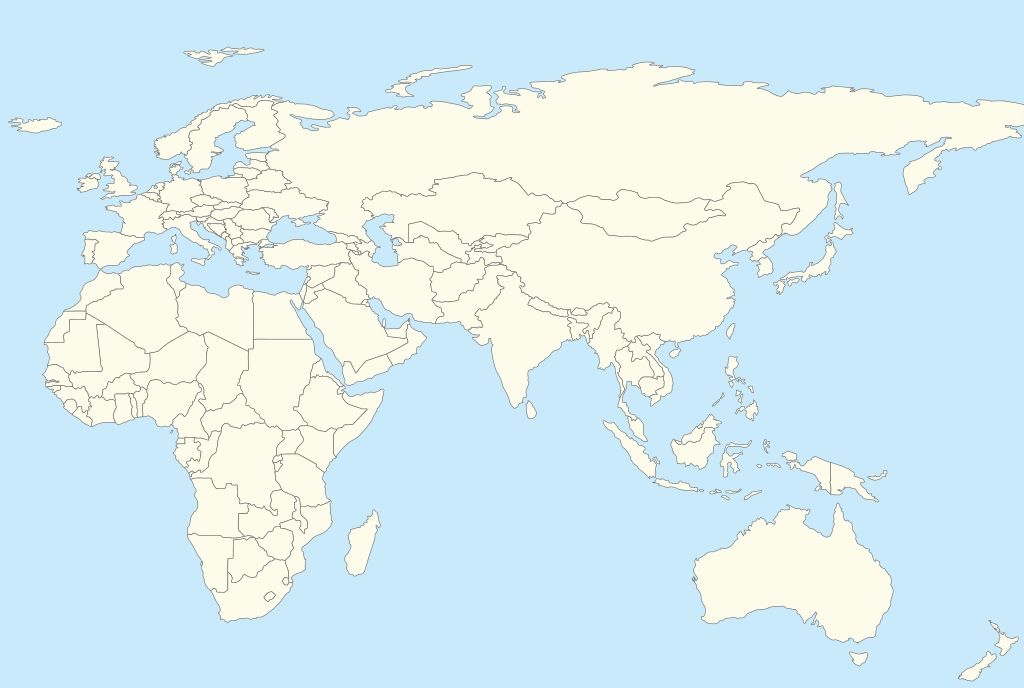Aurignacian
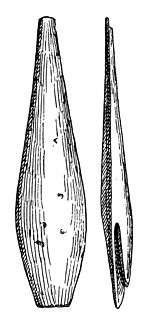
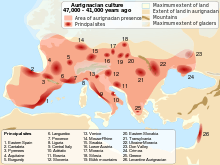 | |
| Geographical range | Eurasia |
|---|---|
| Period | Upper Paleolithic |
| Dates | c. 40,000 – c. 30,000 BP |
| Type site | Aurignac |
| Preceded by | Châtelperronian |
| Followed by | Gravettian |
| The Paleolithic |
|---|
|
↑ Pliocene (before Homo) |
|
Lower Paleolithic
Middle Paleolithic
Upper Paleolithic
|
| ↓ Mesolithic ↓ Stone Age |
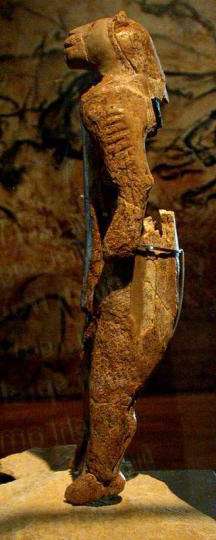
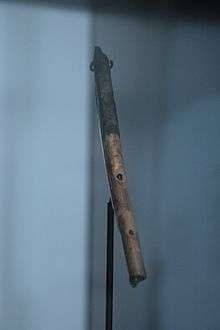
The Aurignacian culture (/ɔːrɪɡˈneɪʃən/ or /ɔːrɪnˈjeɪʃən/) is an archaeological culture of the Upper Palaeolithic. It is the earliest modern human culture in Europe, and is associated with the immigration of anatomically modern humans from the Near East. It first appeared in Eastern Europe around 43,000 BP, and in Western Europe between 40,000 and 36,000 years BP. It was replaced by the Gravettian culture around 28,000 to 26,000 years ago.[2]
The name originates from the type site (a site considered to be the model of a particular archaeological culture) of Aurignac, Haute-Garonne, which is a town in the south-west of France near Toulouse or Andorra.
The oldest undisputed example of human figurative art, the Venus of Hohle Fels, comes from this culture. It was discovered in September 2008 in a cave at Schelklingen in Baden-Württemberg in southern Germany. The Bacho Kiro site is one of the earliest known Aurignacian burials.[3]
Main characteristics
The Aurignacian tool industry is characterized by worked bone or antler points with grooves cut in the bottom. Their flint tools include fine blades and bladelets struck from prepared cores rather than using crude flakes.[4]) The people of this culture also produced some of the earliest known cave art, such as the animal engravings at Trois Freres and the paintings at Chauvet cave in southern France. They also made pendants, bracelets, and ivory beads, as well as three-dimensional figurines. Perforated rods, thought to be spear throwers or shaft wrenches, also are found at their sites.
Association with modern humans
The sophistication and self-awareness demonstrated in the work led archaeologists to consider the makers of Aurignacian artifacts the first modern humans in Europe. Human remains and Late Aurignacian artifacts found in juxtaposition support this inference. Although finds of human skeletal remains in direct association with Proto-Aurignacian technologies are scarce in Europe, the few available are also probably modern human. The best dated association between Aurignacian industries and human remains are those of at least five individuals from the Mladeč caves in the Czech Republic, dated by direct radiocarbon measurements of the skeletal remains to at least 31,000–32,000 years old. At least three robust, but typically anatomically-modern individuals from the Peștera cu Oase cave in Romania, were dated directly from the bones to ca. 35,000–36,000 BP. Although not associated directly with archaeological material, these finds are within the chronological and geographical range of the Early Aurignacian in southeastern Europe.[4] On genetic evidence it has been argued that both Aurignacian and the Dabba culture of North Africa came from an earlier big game hunting Aurignacian culture of the Levant[5]
Art
Aurignacian figurines have been found depicting faunal representations of the time period associated with now-extinct mammals, including mammoths, rhinoceros, and Tarpan, along with anthropomorphized depictions that may be interpreted as some of the earliest evidence of religion.
Many 35,000-year-old animal figurines were discovered in the Vogelherd Cave in Germany.[6] One of the horses, amongst six tiny mammoth and horse ivory figures found previously at Vogelherd, was sculpted as skillfully as any piece found throughout the Upper Paleolithic. The production of ivory beads for body ornamentation was also important during the Aurignacian. There is a notable absence of painted caves, however, which begin to appear within the Solutrean.[7]
Typical statuettes consist of women that are called Venus figurines. They emphasize the hips, breasts, and other body parts associated with fertility. Feet and arms are lacking or minimized. One of the most ancient figurines was discovered in 2008 in the Hohle Fels cave in Germany. The figurine has been dated to 35,000 years ago.[8][9]
Aurignacian finds include bone flutes. The oldest undisputed musical instrument was the Hohle Fels Flute discovered in the Hohle Fels cave in Germany's Swabian Alb in 2008.[10] The flute is made from a vulture's wing bone perforated with five finger holes, and dates to approximately 35,000 years ago.[10] A flute was also found at the Abri Blanchard in southwestern France.[7]
Tools
Stone tools from the Aurignacian culture are known as Mode 4, characterized by blades (rather than flakes, typical of mode 2 Acheulean and mode 3 Mousterian) from prepared cores. Also seen throughout the Upper Paleolithic is a greater degree of tool standardization and the use of bone and antler for tools. Based on the research of scraper reduction and paleoenvironment, the early Aurignacian group moved seasonally over greater distance to procure reindeer herds within cold and open environment than those of the earlier tool cultures.[11]
-

Aurignacian blades
-
.jpg)
Dufour bladelet
Location
Asia
Lebanon/Palestine/Israel region
- Contained within an atratigraphic column, along with other cultures.[12]
- Many sites in Siberia including around Lake Baikal, the Ob River valley, and Minusinsk.[12]
See also
- Synoptic table of the principal old world prehistoric cultures
- Ksar Akil
- Venus figurines
- Bacho Kiro cave
| Preceded by Châtelperronian |
Aurignacian 43,000–26,000 BP |
Succeeded by Gravettian |
References
- ↑ Debeljak, Irena; Turk, Matija. "Potočka zijalka". In Šmid Hribar, Mateja. Torkar, Gregor. Golež, Mateja. Podjed, Dan. Drago Kladnik, Drago. Erhartič, Bojan. Pavlin, Primož. Jerele, Ines. Enciklopedija naravne in kulturne dediščine na Slovenskem – DEDI (in Slovenian). Retrieved 12 March 2012.
- ↑ Wood, Bernard, ed. (2011). "Aurignacian". Wiley-Blackwell Encyclopedia of Human Evolution. John Wiley. ISBN 9781444342475.
- ↑ Milisauskas, Sarunas (2011). European Prehistory: A Survey. Springer. p. 74. ISBN 978-1-4419-6633-9. Retrieved 8 June 2012.
One of the earliest dates for an Aurignacian assemblage is greater than 43,000 BP from Bacho Kiro cave in Bulgaria ...
- 1 2 P.Mellars, Archeology and the Dispersal of Modern Humans in Europe: Deconstructing the Aurignacian, Evolutionary Anthropology, vol. 15 (2006), pp. 167–182.
- ↑ Olivieri A, and 14 others. 2007. Timing of a back-migration into Africa. Science 316:50-53. doi:10.1126/science.316.5821.50, "Sequencing of 81 entire human mitochondrial DNAs (mtDNAs) belonging to haplogroups M1 and U6 reveals that these predominantly North African clades arose in southwestern Asia and moved together to Africa about 40,000 to 45,000 years ago. Their arrival temporally overlaps with the event(s) that led to the peopling of Europe by modern humans and was most likely the result of the same change in climate conditions that allowed humans to enter the Levant, opening the way to the colonization of both Europe and North Africa. Thus, the early Upper Palaeolithic population(s) carrying M1 and U6 did not return to Africa along the southern coastal route of the "out of Africa" exit, but from the Mediterranean area; and the North African Dabban and European Aurignacian industries derived from a common Levantine source."
- ↑ Finds from the Vogelherd cave
- 1 2 Richard Leakey & Roger Lewin, Origins Reconsidered: In Search of What Makes Us Human (1992)
- ↑ Conard, Nicholas (2009). "A female figurine from the basal Aurignacian of Hohle Fels Cave in southwestern Germany" (PDF). Nature. 459 (7244): 248–52. doi:10.1038/nature07995. PMID 19444215.
- ↑ Henderson, Mark (2009-05-14). "Prehistoric female figure 'earliest piece of erotic art uncovered'". The Times. London.
- 1 2 Wilford, John N. (June 24, 2009). "Flutes Offer Clues to Stone-Age Music". Nature. 459 (7244): 248–52. Bibcode:2009Natur.459..248C. doi:10.1038/nature07995. PMID 19444215. Lay summary – The New York Times.. Citation on p. 248.
- ↑ Blades, B. 2003 End scraper reduction and hunter-gatherer mobility. American Antiquity 68:141-156
- 1 2 Langer, William L., ed. (1972). An Encyclopedia of World History (5th ed.). Boston, MA: Houghton Mifflin Company. p. 9. ISBN 0-395-13592-3.
External links
| Wikimedia Commons has media related to Aurignacian. |
- Picture Gallery of the Paleolithic (reconstructional palaeoethnology), Libor Balák at the Czech Academy of Sciences, the Institute of Archaeology in Brno, The Center for Paleolithic and Paleoethnological Research

